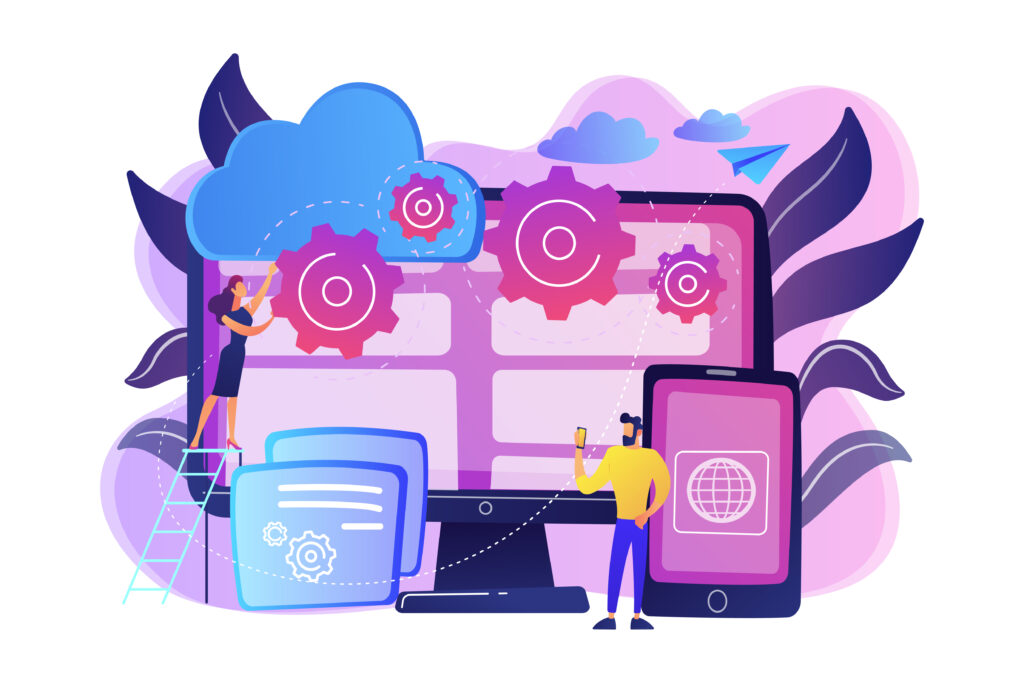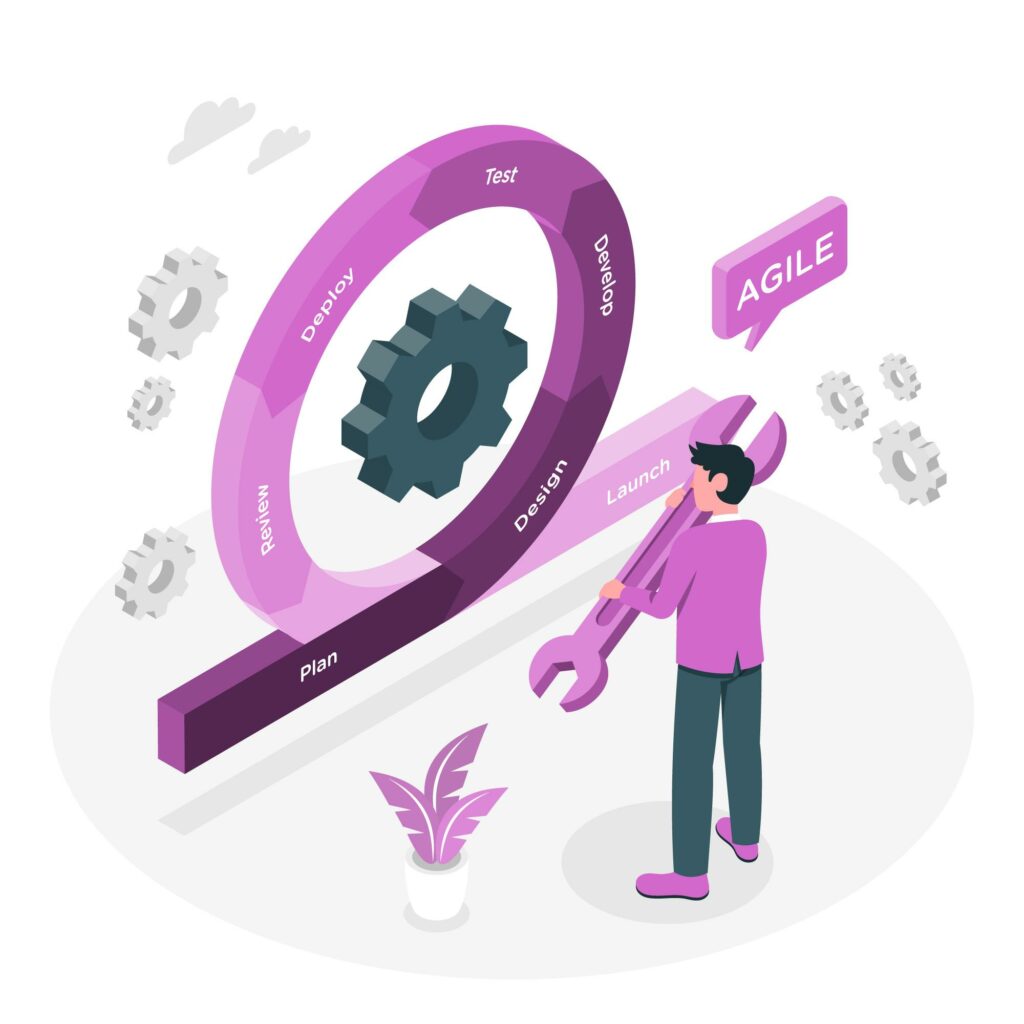Why Look For Collaborative Software Development?
It is important to look for best practices for collaborative software development. Software development is a crucial factor that requires a streamlined process and efficiency. This process will let you create and deliver high quality products that can delight your clients. This is a crucial factor that can help your business to grow faster your customers. This is not an easy process to achieve and will require some crucial streamlining process to achieve the best:

Achieving Consensus:
Collaboration enables organizations to effectively achieve consensus on goals and the necessary actions to achieve them. This capability becomes crucial as project requirements evolve, funding fluctuates, and market demands necessitate early releases.
By fostering collaborative efforts, all stakeholders can align on prioritizing changes based on time and budget constraints, ensuring smoother adaptation to dynamic project landscapes.
Increasing Efficiency:
Collaboration significantly boosts productivity within development teams. According to a 2020 Forrester survey, the implementation of collaboration tools can save employees between 5% to 10% of their time.
This efficiency gain is particularly valuable for small startup teams, where leveraging diverse perspectives on tasks accelerates the completion of critical milestones.
Minimizing Errors:
Collaboration plays a pivotal role in reducing errors and promoting a richer blend of innovative ideas and insights. With multiple team members contributing to each feature, coding mistakes are more likely to be caught early in the development process, even before reaching the testing phase.
Moreover, collaborative environments encourage team members to propose more efficient approaches to integrating functionality, thereby enhancing the overall quality of the final product.
Delivering User-Centric Solutions:
Extensive collaboration empowers software developers to create products that effectively meet user needs and preferences. For instance, in the development of a SaaS point-of-sale terminal, input from accounting professionals and experienced cashiers ensures that the product addresses a wide array of operational requirements, enhancing its usability and customer satisfaction.
Achieving Cross-Platform Consistency:
Collaboration with experts across different operating systems facilitates the realization of cross-platform application goals. Developers specializing in one OS can collaborate seamlessly with counterparts proficient in other OS environments, ensuring a cohesive and consistent user experience across various platforms.
This collaborative approach is particularly advantageous in domains such as open-source software development, where compatibility and interoperability are important.
Best Practices For Collaborative Software Development

1 Open Communication in Collaborative Software Development
Open communication is vital in collaborative software development to ensure alignment among team members and senior leadership on project goals and requirements. It involves several key practices:
- Sharing Relevant Details: Facilitate access to necessary information for all team members to effectively prioritize tasks and manage expectations. This practice minimizes conflicting intentions and ensures everyone understands the project’s direction.
- Status Updates: Regularly update all stakeholders on the progress of different features and their dependencies. This transparency helps avoid surprises and enables proactive decision-making to address potential bottlenecks or delays.
- Building Trust: Cultivate a culture of trust where team members feel empowered to share opinions and ideas without hesitation. This fosters effective collaboration and encourages innovative solutions to challenges.
- Encouraging Constructive Feedback: Promote an environment of open discussions and feedback loops. Encourage team members to provide constructive criticism and suggestions to continuously improve the development process and final outcomes.
- Streamlining Code Reviews: Conduct thorough code reviews and provide comprehensive briefings on code revisions. This approach ensures efficient reviews, reduces errors, and maintains high-quality standards in the software development lifecycle.
- Implementing Asynchronous Communication: Establish protocols for effective communication across different time zones and schedules. Utilize tools like Slack for asynchronous discussions, updates, and file sharing, allowing team members to stay connected and informed regardless of their location.
- Enhancing Interactive Communication: Utilize presentation and video conferencing tools for tasks need real-time collaboration. These tools facilitate clear explanations, brainstorming sessions, and discussions among team members, enhancing interactive communication and decision-making processes.
2. Opting for the Right Tools

Choosing the appropriate tools for collaborative software development is crucial for optimizing workflows and improving communication efficiency. When making tool selections, consider the following factors:
- Compatibility with Development Processes: Evaluate how well the tool integrates with your organization’s programming languages, version control systems, and overall development workflows.
Ensure the tool supports essential functionalities such as tracking changes, managing dependencies, and generating compatible file formats (e.g., for code, documentation). This compatibility ensures smooth collaboration and efficient handling of project assets across different environments.
Tools equipped with analytics capabilities can provide valuable insights into team activity, helping you monitor progress and optimize communication patterns over time.
- Organizational Considerations: Firstly, take into account the specific needs of your organization, such as the presence of remote workers, varying time zones, and availability schedules. Additionally, choose tools that accommodate these factors and support remote collaboration effectively.
Tools offering comprehensive project management features, task tracking, and integration capabilities with other essential software (e.g., issue trackers, CI/CD pipelines) can streamline workflows and ensure cohesive teamwork.
3. Effective Workload Distribution

Successfully implementing innersource practices hinges on effectively distributing workloads across teams and organizational boundaries. This can be achieved through several strategic approaches:
Simplifying Approval and Review Processes:
Delegate decision-making responsibilities to a smaller group of participants to streamline approval and review processes. Establish clear criteria for participation in these processes to maintain consistency and uphold quality standards.
Utilize a cross-functional team of decision-makers comprising representatives from various departments (e.g., development, quality assurance, product management) to ensure comprehensive oversight and support for innersource initiatives.
Load Balancing:
Distribute heavy workloads evenly among geographically dispersed developers to prevent too much burden on individual team members. This approach promotes collaboration across different time zones and leverages diverse skill sets within the organization. Additionally, engage non-developer team members—such as project managers, technical writers, and security engineers—to contribute their expertise to the innersource process.
Examples of non-developer roles contributing to Innersource include:
- Project Managers: Provide updates on project status, facilitate coordination among team members, and ensure changes align with project timelines and objectives.
- Technical Writers: Collaborate with project engineers to accurately document code features, processes, and best practices. Clear and comprehensive documentation enhances the usability and maintainability of innersourced projects.
- Security Engineers: Conduct thorough code reviews to identify and address potential security vulnerabilities early in the development workflow. Their expertise ensures that innersourced contributions adhere to security standards and compliance requirements.
By strategically distributing workloads and involving diverse team members in the innersource initiative, organizations can promote collaborative efforts, reduce individual burdens, and maximize the collective expertise towards achieving high-quality software solutions. This approach not only fosters innovation and knowledge sharing but also enhances the overall effectiveness and success of innersource practices within the organization.
4. Promote Communication and Continuous Review

To cultivate a collaborative environment within your inner source community, it’s essential to prioritize open communication and ongoing review processes. Here are effective strategies to achieve this:
Utilize Version Control Features:
Leverage the commenting, tagging, and review functionalities available in your version control system (e.g., Git, GitHub, GitLab). These features facilitate transparent feedback loops and continuous review of code contributions. Encourage team members to provide constructive comments and suggestions directly within the code repository, promoting a culture of active participation and improvement.
Manage Code Changes:
Implement practices such as forks and branches within your version control system. These tools allow developers to experiment with different changes and improvements without affecting the main project branch immediately. By enabling iterative development and testing of new ideas, forks and branches help improve workflows and reduce the risk of delay ongoing projects.
Share Work and Feedback:
Encourage developers to regularly share their progress and updates by tagging relevant team members in their code commits or pull requests. This practice ensures that contributors are aware of ongoing developments and can provide timely feedback.
When issues arise, create detailed descriptions of the problem and involve relevant stakeholders by tagging them, ease prompt resolution, and collaboration.
Enhance Visibility:
Maintain transparency throughout the entire software development lifecycle, including testing and deployment phases. Ensure that all project activities, from code changes to testing results and deployment plans, are visible to all team members.
Use project management tools or dashboards to provide real-time updates and insights, fostering informed decision making and alignment across the team.
By promoting effective communication practices and setting up mechanisms for continuous review, you empower your inner source community to collaborate more efficiently.
5. Documenting Relevant Activities
Effective collaboration in software development relies on thorough documentation to ensure clarity, minimize confusion, and facilitate a smooth development process. Here are key considerations for documentation:
Automatic Documentation Generation:
Utilize tools that automatically generate logs and development environment details. For instances where automation isn’t feasible, developers should manually document significant discoveries, changes, and deviations from planned approaches.
Specialized Documentation:
Create documents to capture technical details, behavioral insights of the product, design context, and runtime parameters. This documentation aids new contributors in quickly getting project status and leveraging resources efficiently.
Accessibility and Version Control:
Securely store and provide access to documentation for all relevant parties, setting up a definitive source of information. Regular updates ensure alignment with new project developments, linking related documents to enhance code management and version control.
Roadmaps and Task Management:
Develop roadmaps that outline project milestones, aiding in progress tracking and decision making. Documentation facilitates task management by clearly defining responsibilities and required changes.
Knowledge Base Integration:
Employ integrated tools like Jira and Confluence to combine essential information into a central knowledge base accessible to team members, creating efficient collaboration and informed decision-making.
Comprehensive documentation enhances transparency, supports knowledge sharing, and streamlines workflows, ease effective collaboration across software development teams.
6. Accelerate the Development Cycle

Streamline Complex Projects:
Firstly, divide large projects into smaller, more manageable tasks to simplify complexity and sharpen team focus. Then, assign each task to the best team member to ensure expertise and efficiency.
Utilize Collaborative Techniques:
Implement effective strategies such as pair programming and thorough code reviews to elevate code quality and reduce errors. Pair programming involves two developers working together on the same task, letting real time feedback and enhancing overall code quality. Code reviews require examination and feedback on code by peers, ensuring to mee the quality standards and best practices.
By including these best practices into your software development process, you can create a team environment that supports productivity, improves quality, and enhances overall project success.
[Want to learn more best practices for collaborative software development? Click here to reach us.]
Conclusion
In conclusion, we have seen some best practices for collaborative software development. Adopting best practices for collective software development is pivotal for creating a culture of innovation and efficiency within teams. By ranking open communication, using the right tools, distributing workloads effectively, encouraging continuous review, documenting activities fully, and setting up techniques like pair programming and code reviews, organizations can enhance productivity and deliver high quality software solutions.
At the forefront of supporting these practices is Bobcares, whose software development support services provide valuable expertise in managing the complexities of modern software projects. With Bobcares, teams benefit from tailored solutions that improves the development cycles and manage risks. This partnership not only enhances technical capabilities but also allows teams to create and adapt swiftly to new market demands.
Embracing these principles not only drives continues improvement but also creates a culture of continuous improvement and customer satisfaction. By taking in Bobcares’ software development support services, organizations can go through challenges, achieve sustainable growth, and deliver exceptional software solutions that exceed expectations.







0 Comments